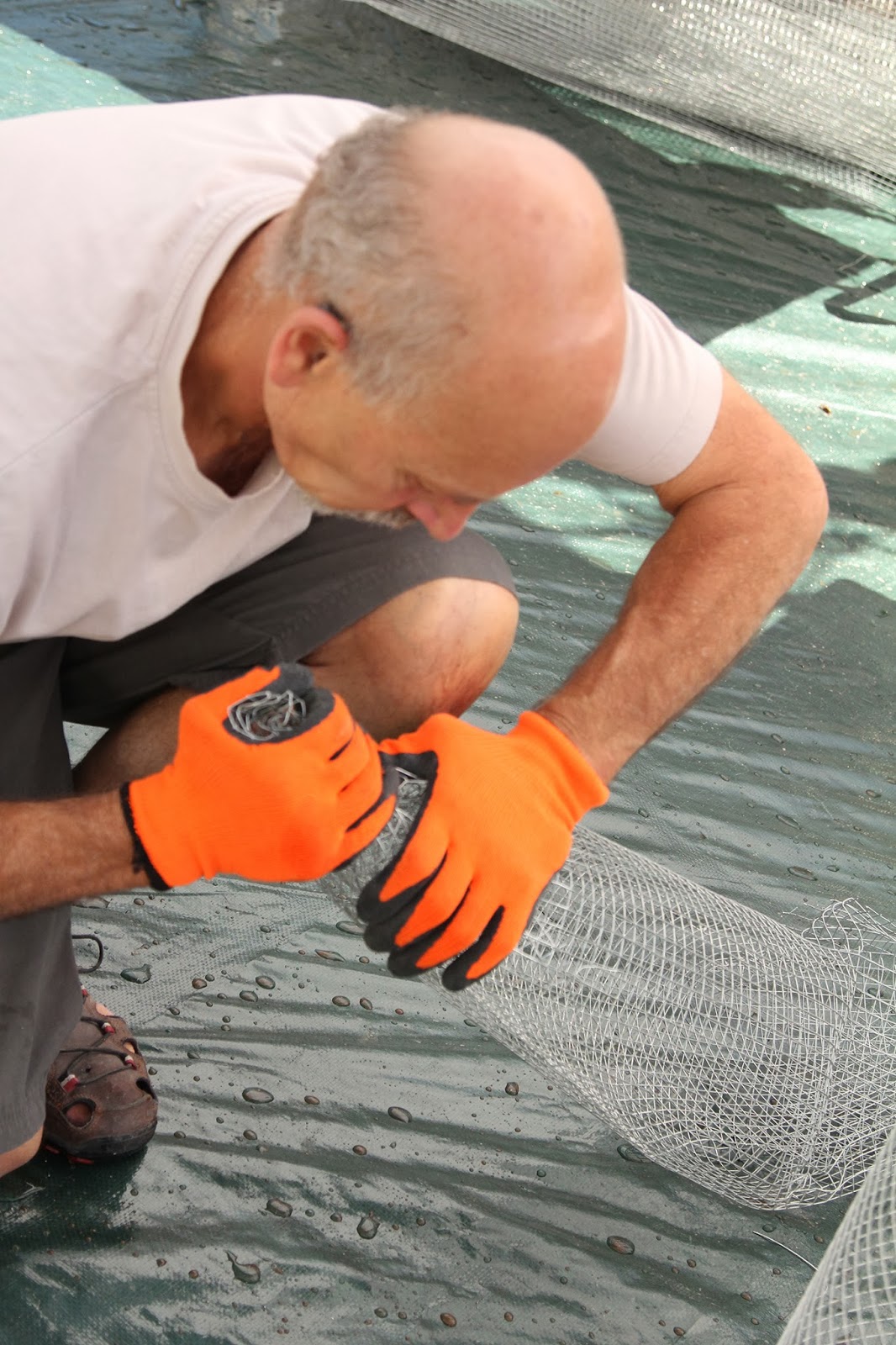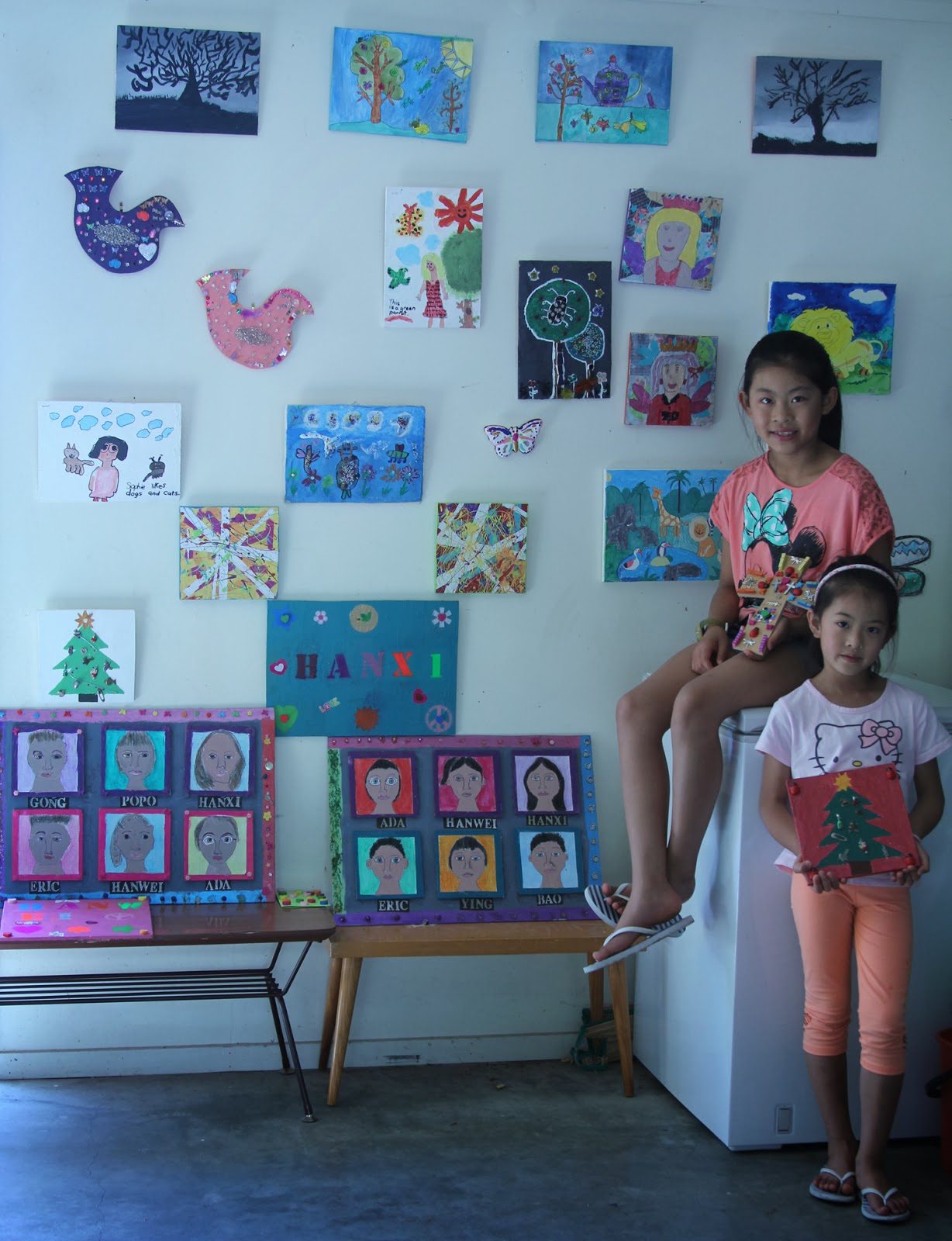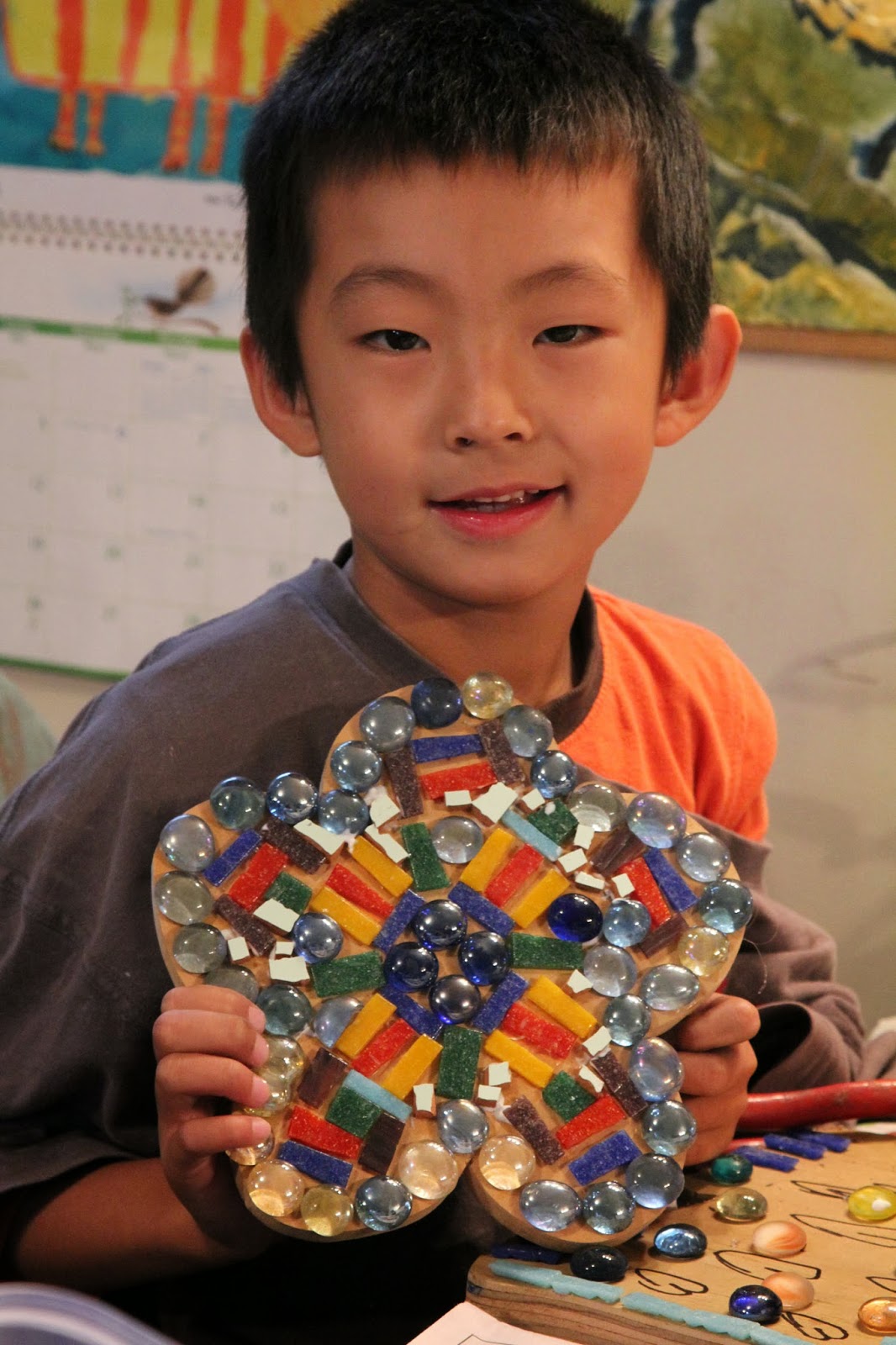I wanted to make a dog so I went to a workshop to learn how.
First step was to cut the mesh; my tutor Steve demonstrated on my work for me.
The legs
The body
Bending it up for the tail.
Tying the body to the pole, for stability so I can add more different type of mesh

Bending the rod and cutting it
to reinforce the legs.
Forcing the rod into the wire structure
Bending the legs
Leverage against a table.
Bending legs for feet.
Sticking tail in
Deciding how long.
Putting on ears.
Applying the mix
And sculpting it into shape
Long ears are good, some kid thought it was an elephant.
Bit by bit, it all goes on.
A lot of time effort and attention to detail goes into making a sculpture like this.
You are injecting your personality into it and at the same time it has a life of its own.
People, when I was making it said what type of dog is it and I said "I don't know, it will reveal itself to me when it's finished."
I like all of my work to be quirky and humourous and this guy fits the bill.
I wanted to make a girl dog, but it came out looking more like a boy.
He is finished for the sculpting stage.
His name is Rufus and he's a Basset hound (Hush puppy), crossed with a beagle.
He's a bit of a howler to the moon type of guy.
He's in front of my mosaic studio now and I am going to mosaic him with flat stones, and put some eyes in.
So watch this space.
I showed him to my cat Gary and Gary does not like him, so we will see what happens in the future.
Thanks a lot to Steve for all his devoted help.
As you see I could not have done it without him.
I'm not the type of person who goes around saying " Well I could just do that for myself at home."
The point is you most likely won't.
Invest in yourself and go out and pay to learn something off someone else and for goodness sake don't try to get all the information they have learned out of them for free.
It's amazing how paying for knowledge will open you up to incredible opportunities.
Thanks to Lyn, Steve's wife and co- business owner for all their help and hospitality
I enjoyed the workshop.
Philosophy of life
I always start my year off by going to some type of workshop, whether it be painting, writing or photography.
I've invested a lot, but I've also gained a lot.
I must have attended at least 300.
I have a commitment to continual learning and it keeps me fresh and enthusiastic.
Because of it I would say that I have a huge knowledge of all types and styles of painting and mosaic making.
If someone alsks me how to do a technique I usually know.
It's good professional development.
It's fun, you meet some cool people.
All the other women on the course were really lovely.
It's a great way to get some motivation and make some new friends.
So treat yourself today. Where ever in the world you are,
sign up for a workshop where you are physically with other people and a real live tutor, you won't regret it.
Creative Quote of the day
I've learned that people will forget what you said, they'll forget what you did, but they will never forget about how you made them feel.
Maya Angelo
Janet Keen Creativity
Mosaic and painting workshops, Monday to Wednesday mornings and Friday mornings 9.30am to 11.30am
Children's after school creativity classes enrolling now for Monday to Wednesday and Fridays after 3.30pm to 5.00pm.
Phone 346-3435 to secure your February place or email jkeen@clear.net.nz
If you are having a creative event in the Bay Of Plenty and you'd like me to cover it photographically; give me a ring on (07)346-3435 or email me at jkeen@clear.net.nz and I will send you a quote.
First step was to cut the mesh; my tutor Steve demonstrated on my work for me.
The legs
The body
Bending it up for the tail.
Tying the body to the pole, for stability so I can add more different type of mesh

Bending the rod and cutting it
to reinforce the legs.
Forcing the rod into the wire structure
Bending the legs
Leverage against a table.
Bending legs for feet.
Sticking tail in
Deciding how long.
Putting on ears.
Applying the mix
And sculpting it into shape
Long ears are good, some kid thought it was an elephant.
A lot of time effort and attention to detail goes into making a sculpture like this.
You are injecting your personality into it and at the same time it has a life of its own.
People, when I was making it said what type of dog is it and I said "I don't know, it will reveal itself to me when it's finished."
I like all of my work to be quirky and humourous and this guy fits the bill.
I wanted to make a girl dog, but it came out looking more like a boy.
He is finished for the sculpting stage.
His name is Rufus and he's a Basset hound (Hush puppy), crossed with a beagle.
He's a bit of a howler to the moon type of guy.
He's in front of my mosaic studio now and I am going to mosaic him with flat stones, and put some eyes in.
So watch this space.
I showed him to my cat Gary and Gary does not like him, so we will see what happens in the future.
Thanks a lot to Steve for all his devoted help.
As you see I could not have done it without him.
I'm not the type of person who goes around saying " Well I could just do that for myself at home."
The point is you most likely won't.
Invest in yourself and go out and pay to learn something off someone else and for goodness sake don't try to get all the information they have learned out of them for free.
It's amazing how paying for knowledge will open you up to incredible opportunities.
Thanks to Lyn, Steve's wife and co- business owner for all their help and hospitality
I enjoyed the workshop.
Philosophy of life
I always start my year off by going to some type of workshop, whether it be painting, writing or photography.
I've invested a lot, but I've also gained a lot.
I must have attended at least 300.
I have a commitment to continual learning and it keeps me fresh and enthusiastic.
Because of it I would say that I have a huge knowledge of all types and styles of painting and mosaic making.
If someone alsks me how to do a technique I usually know.
It's good professional development.
It's fun, you meet some cool people.
All the other women on the course were really lovely.
It's a great way to get some motivation and make some new friends.
So treat yourself today. Where ever in the world you are,
sign up for a workshop where you are physically with other people and a real live tutor, you won't regret it.
Creative Quote of the day
I've learned that people will forget what you said, they'll forget what you did, but they will never forget about how you made them feel.
Maya Angelo
Janet Keen Creativity
Mosaic and painting workshops, Monday to Wednesday mornings and Friday mornings 9.30am to 11.30am
Children's after school creativity classes enrolling now for Monday to Wednesday and Fridays after 3.30pm to 5.00pm.
Phone 346-3435 to secure your February place or email jkeen@clear.net.nz
If you are having a creative event in the Bay Of Plenty and you'd like me to cover it photographically; give me a ring on (07)346-3435 or email me at jkeen@clear.net.nz and I will send you a quote.
I've
learned that people will forget what you said, people will forget what
you did, but people will never forget how you made them feel.
Read more at http://www.brainyquote.com/quotes/quotes/m/mayaangelo392897.html#QmUKhVbWDFrYUDx3.99
Read more at http://www.brainyquote.com/quotes/quotes/m/mayaangelo392897.html#QmUKhVbWDFrYUDx3.99
I've
learned that people will forget what you said, people will forget what
you did, but people will never forget how you made them feel.
Read more at http://www.brainyquote.com/quotes/quotes/m/mayaangelo392897.html#QmUKhVbWDFrYUDx3.99
Read more at http://www.brainyquote.com/quotes/quotes/m/mayaangelo392897.html#QmUKhVbWDFrYUDx3.99
I've
learned that people will forget what you said, people will forget what
you did, but people will never forget how you made them feel.
Read more at http://www.brainyquote.com/quotes/quotes/m/mayaangelo392897.html#QmUKhVbWDFrYUDx3.99
Read more at http://www.brainyquote.com/quotes/quotes/m/mayaangelo392897.html#QmUKhVbWDFrYUDx3.99




































































